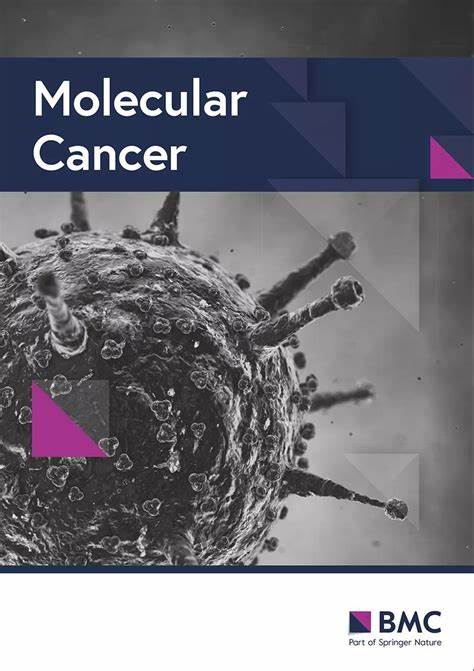利用患者来源的生物3D打印胃癌模型探索个性化预测临床化疗疗效和揭示肿瘤异质性
IF 33.9
1区 医学
Q1 BIOCHEMISTRY & MOLECULAR BIOLOGY
引用次数: 0
摘要
胃癌(GC)明显的化疗异质性对个性化治疗策略提出了重大挑战,目前的方法缺乏可靠的化疗疗效和术后预后预测模式。虽然患者来源的类器官(PDO)和异种移植(PDX)模型可以作为建立的三维平台,但它们高昂的成本和固有的批量效应限制了对天然肿瘤细胞外基质(ECM)复杂性的忠实复制。我们利用患者来源的GC组织构建个性化的3D生物打印(3DP)-GC模型。在筛选生物墨水的最佳力学性能和生物相容性后,我们成功高效地构建了33例患者的3d - gc模型,并进行了组织病理学和基因组分析,确定3d - gc模型有效地保留了亲代肿瘤的组织学结构、生物标志物表达丰度和基因突变谱。采用胃癌临床治疗方法对3d - gc模型进行药物筛选。回顾性分析患者的新辅助治疗后情况,并对患者的新辅助治疗后情况进行随访,以评估该模型在预测和选择胃癌化疗药物方面的潜力。本研究利用3D生物打印技术成功高效地构建了33例胃癌患者体外3D模型,并进行了组织病理学和基因组学验证,发现3D -GC模型较好地保留了亲代肿瘤中标记物的表达丰度和突变谱。3d - gc平台的药物敏感性与患者实际临床疗效有显著相关性。本研究建立了一个鲁棒稳定的3d - gc模型。至关重要的是,3d - gc模型的药物检测可以在更短的时间内以更低的成本准确预测患者的临床化疗情况,为高通量药物筛选和个性化治疗决策提供了一种很有前景的工具。本文章由计算机程序翻译,如有差异,请以英文原文为准。
Exploring personalized prediction of clinical chemotherapy efficacy and revealing tumor heterogeneity using patient-derived 3D bioprinting gastric cancer models
The pronounced chemotherapeutic heterogeneity observed in gastric cancer (GC) poses significant challenges to personalized treatment strategies, with current approaches lacking reliable predictive modalities for chemotherapy efficacy and postoperative prognosis. While patient-derived organoid (PDO) and xenograft (PDX) models serve as established three-dimensional platforms, their prohibitive costs and inherent batch effect limit faithful replication of native tumor extracellular matrix (ECM) complexity. We utilized patient-derived GC tissues to construct individualized 3D bioprinting (3DP)-GC models. After screening bioinks for optimal mechanical properties and biocompatibility, we successfully and efficiently constructed 3DP-GC models of 33 patients, and performed histopathological and genomic analyses to determine that the 3DP-GC model effectively preserved the histological architecture, biomarker expression abundance and genetic mutation profiles of the parental tumors. Drug screening on the 3DP-GC models was conducted using clinical gastric cancer therapies. Retrospective analysis of patients’ post-neoadjuvant therapy and follow-up of those post-adjuvant therapies were performed to evaluate the model’s potential in predicting and selecting chemotherapeutic agents for gastric cancer patients. In this study, we successfully and efficiently constructed 3D in vitro models of 33 GC patients using 3D bioprinting technology, and performed histopathological and genomic validation to find that the 3DP-GC model well preserved the expression abundance and mutation profiles of markers in the parental tumors. A significant correlation was observed in drug sensitivity between the 3DP-GC platform and the actual clinical efficacy observed in patients. Our study establishes a robust and stable 3DP-GC model. Crucially, drug testing of 3DP-GC model can accurately predict the clinical chemotherapy of patients in a shorter time and at a lower cost, offering a promising tool for high-throughput drug screening and personalized treatment decision-making.
求助全文
通过发布文献求助,成功后即可免费获取论文全文。
去求助
来源期刊

Molecular Cancer
医学-生化与分子生物学
CiteScore
54.90
自引率
2.70%
发文量
224
审稿时长
2 months
期刊介绍:
Molecular Cancer is a platform that encourages the exchange of ideas and discoveries in the field of cancer research, particularly focusing on the molecular aspects. Our goal is to facilitate discussions and provide insights into various areas of cancer and related biomedical science. We welcome articles from basic, translational, and clinical research that contribute to the advancement of understanding, prevention, diagnosis, and treatment of cancer.
The scope of topics covered in Molecular Cancer is diverse and inclusive. These include, but are not limited to, cell and tumor biology, angiogenesis, utilizing animal models, understanding metastasis, exploring cancer antigens and the immune response, investigating cellular signaling and molecular biology, examining epidemiology, genetic and molecular profiling of cancer, identifying molecular targets, studying cancer stem cells, exploring DNA damage and repair mechanisms, analyzing cell cycle regulation, investigating apoptosis, exploring molecular virology, and evaluating vaccine and antibody-based cancer therapies.
Molecular Cancer serves as an important platform for sharing exciting discoveries in cancer-related research. It offers an unparalleled opportunity to communicate information to both specialists and the general public. The online presence of Molecular Cancer enables immediate publication of accepted articles and facilitates the presentation of large datasets and supplementary information. This ensures that new research is efficiently and rapidly disseminated to the scientific community.
 求助内容:
求助内容: 应助结果提醒方式:
应助结果提醒方式:


